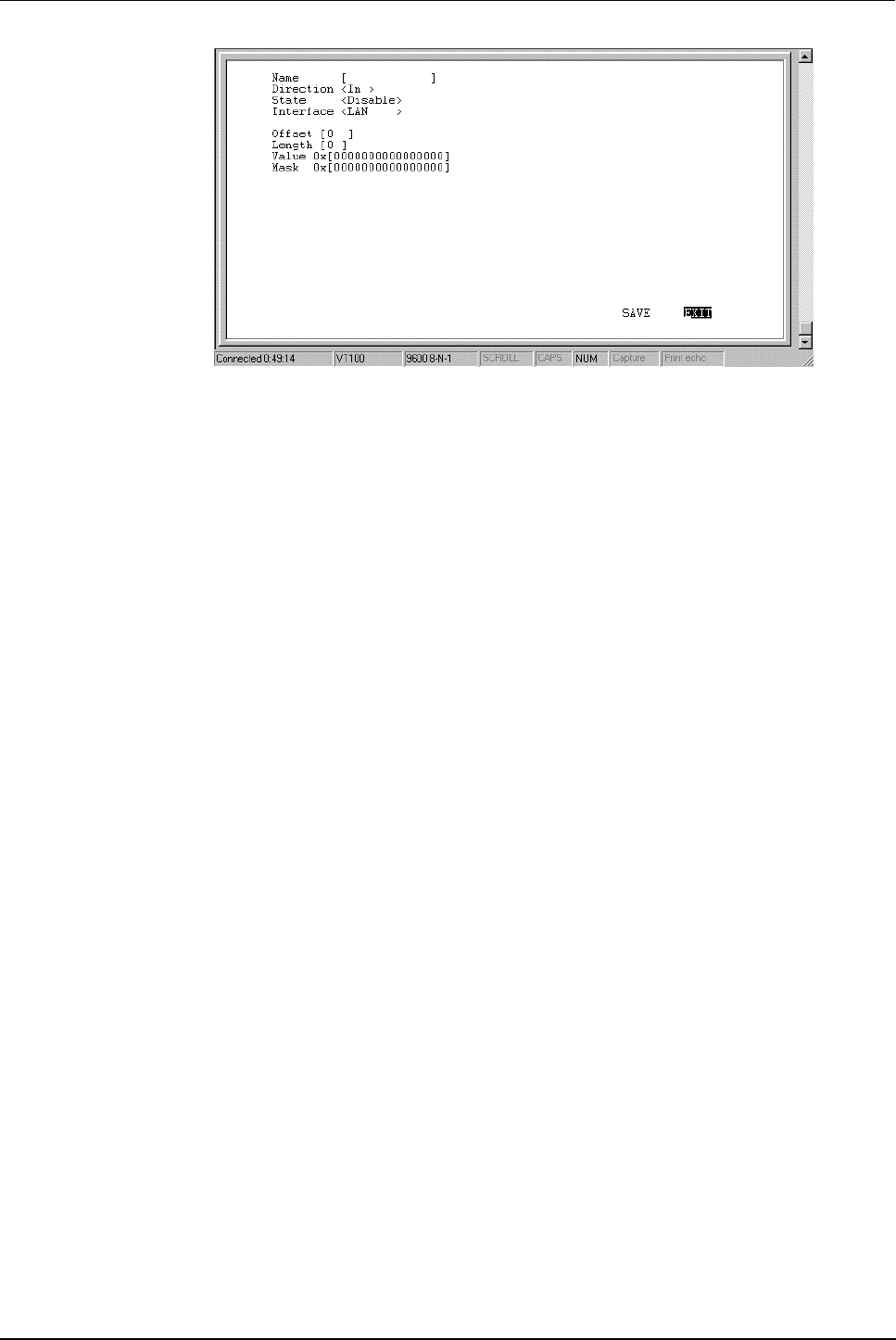
DI-206 ISDN Remote Router
45
The parameters of a filter are described below:
•
Name –
This is a 12 character (maximum), alphanumeric, user-defined name,
used to identify the filter.
•
Direction –
This defines the direction of the frame relative to the Interface
parameter below.
•
State –
This is used to choose the routing decision applied to the frame. The three
decisions are described:
1.
forward
–
This allows the routing of the frame, if it has met the criteria of the
corresponding filter.
2.
drop –
This drops (doesn’t allow routing for) a specific frame that has met
the criteria of the corresponding filter.
3.
disable –
This does not apply the protocol independent filter.
•
Interface –
This applies the filter to a specific interface, either LAN or one of the
ISDN interfaces.
•
Offset –
This defines the reference byte for the Length parameter (described
below). The Offset is the number of bytes (octets) from the beginning of the first
byte of the frame header, immediately after the preamble. The range of the offset
parameter is from 0 to 255 octets. The first byte in a packet has an offset 0.
•
Length –
This is the number of bytes (octets) from 0 to 8 to compare from the
offset value (the Offset reference byte).
•
Value –
This is a 16 digit, hexadecimal field, defining the actual bit values used
to compare with the frame data, at the specified (Offset) position.
•
Mask –
This is a 16 digit, hexadecimal bit mask, used as an operand in the bit-
wise AND operation that will be applied to the Value parameter.
IP Filter
The IP Filter is specifically an IP protocols filter, allowing you to, among other
things, firewall your network, prohibiting specific packets from entering or going out


















